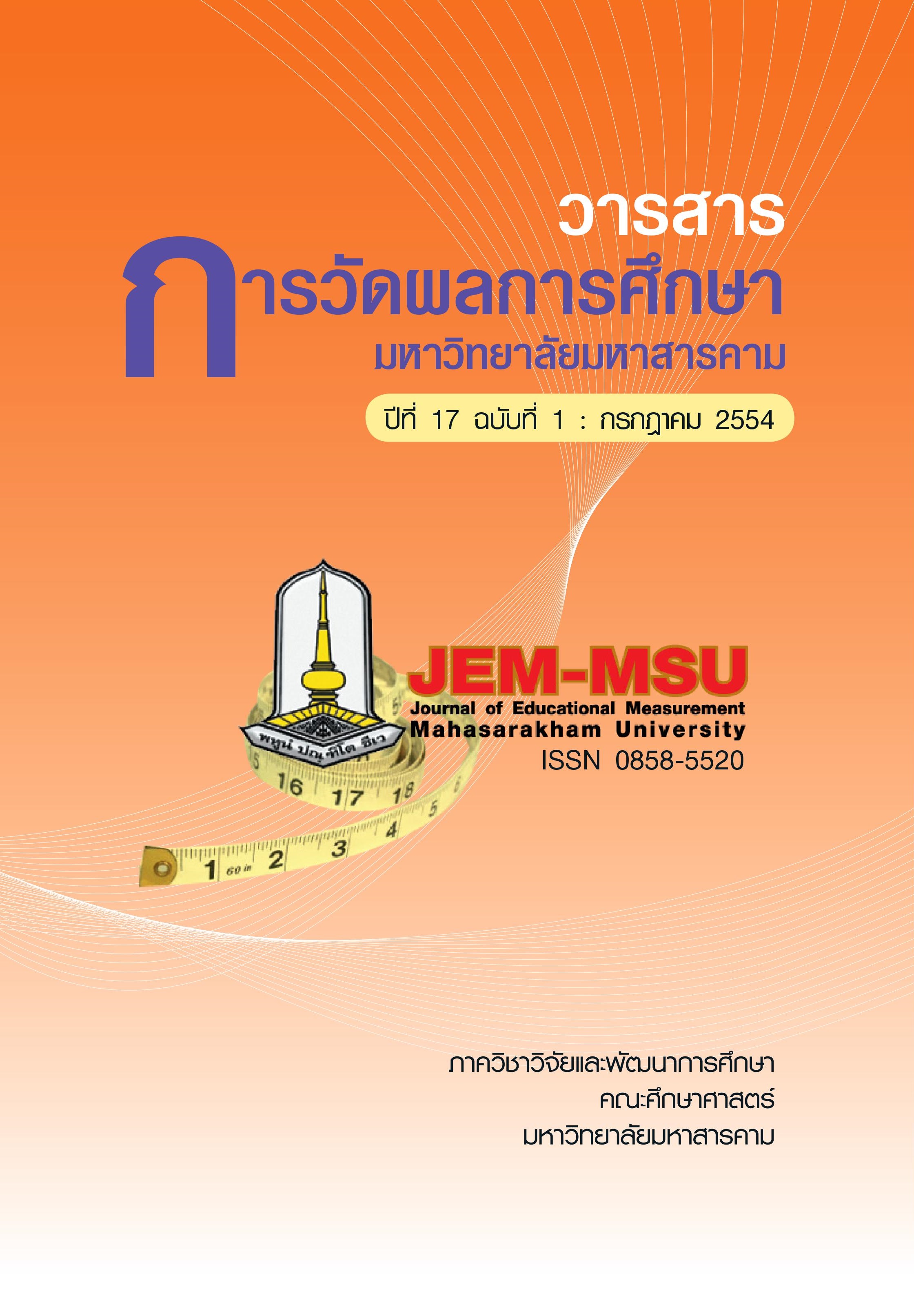The Factors that Influenced Mattayomsuksa 4 Students’ Public-Mindedness in the Schools under the Jurisdiction of the Basic Education Commission in the Upper Northeastern Part.
Main Article Content
Abstract
The study was conducted to investigate the factors that influenced Mattayomsuksa 4
students’ public-mindedness in the schools of the upper northeastern part, and to develop
and investigate the accuracy of the model of the factors that influenced Mattayomsuksa 4
students’ public-mindedness in the schools of the upper northeastern part. The sample of
the study, through the multi-stage sampling, consisted of 1,085 Mattayomsuksa 4 students
who were studying in semester 2 academic year 2010. The research instruments used in the
study consisted of 2 types of tests. The frst one was the public-mindedness test with the
item discrimination from .371 to .759 and the reliability of .953. The second one assessed the
factors that influenced public-mindedness. It consisted of 4 sections. The frst section was
the test of morality and ethical practice with the item discrimination from .352 to .792 and
the reliability of .953. The second one was the emotion quotient test with the discrimination
from .421 to .699 and the reliability of .895. The third one was the test of teacher’s teaching
behavior with the item discrimination from .388 to .787 and the reliability of .926. And the
forth one was the test of parental childcare based on the principles of democracy with the
item discrimination from .457 to .654 and the reliability of .885. The data was analyzed by using the PLA (Path Analysis with LISREL).
The fndings were as follows:
1. The model of the factors that influenced Mattayomsuksa 4 students’ publicmindedness in the schools of the upper northeastern part revealed accordingly with the empirical data (X2 = 53.61, df = 58, p = 0.639). Likewise, the data revealed the GFI of 0.995, the
AGFI of 0.983, the RMSEA of 0.000, and the SRMR of 0.0116.
2. The factors that influenced Mattayomsuksa 4 students’ public-mindedness in
the schools of the upper northeastern part were categorized as stated in the following.
2.1 The factors that directly influenced Mattayomsuksa 4 students’ publicmindedness in the schools of the upper northeastern part were morality and ethical practice.
2.2 The factors that directly and indirectly influenced Mattayomsuksa 4 students’
public-mindedness in the schools of the upper northeastern part were teacher’s teaching
behavior and the parental childcare based on the principles of democracy.
2.3 The factors that directly influenced Mattayomsuksa 4 students’ public-mindedness in the schools of upper northeastern part was emotion quotient.
In conclusion, the factors that engendered public-mindedness were morality, ethical
practice, emotion quotient, parental childcare based on the principles of democracy, teacher’s
teaching behavior and other factors. In order to implant students with public-mindedness,
the cooperation between school and home is needed to guide students so as to make them
equipped with qualifed characteristics and live happily in society
Article Details
The content and information contained in the published article in the Journal of Educational Measurement Mahasarakham University represent the opinions and responsibilities of the authors directly. The editorial board of the journal is not necessarily in agreement with or responsible for any of the content.
The articles, data, content, images, etc. that have been published in the Journal of Educational Measurement Mahasarakham University are copyrighted by the journal. If any individual or organization wishes to reproduce or perform any actions involving the entirety or any part of the content, they must obtain written permission from the Journal of Educational Measurement Mahasarakham University.


